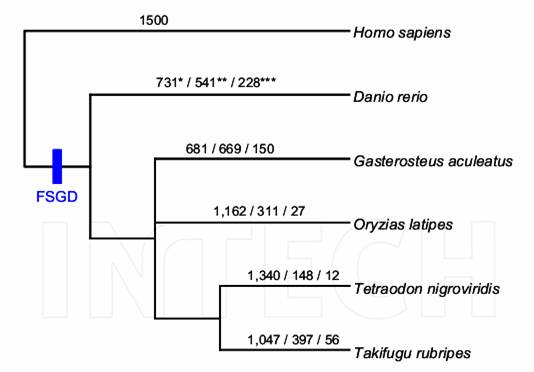
Newsroom
Differential Retention and Loss of Duplicated Gene are Pervasive in Teleost Fish
Gene and gene duplication have been playing an important role in evolution. In 1970, Dr. Ohno, a Japanese-American geneticist and evolutionary biologist, proposed that in the early vertebrate evolution, the two rounds (2R) of whole genome duplication (WGD) increased the complexity and genome size of vertebrates. Recent comparative genomic study shows that the teleost fish experienced another round of genome duplication which called fish-specific genome duplication (FSGD). This third round might be related to the large number of teleosts and their tremendous morphological diversity. However, differential retention and loss of duplicated genes after genome duplication could accompany with speciation. Therefore, it is important to study the evolution of duplicated genes in teleost fish.
The research group led by Prof. HE Shunping at Institute of Hydrobiology, Chinese Academy of Sciences (IHB) performed a systematic molecular evolution analysis on 1,500 duplicated genes after the FSGD in five available teleost genomes that included the genomes of Danio rerio, Gasterosteus aculeatus, Oryzias latipes, Takifugu rubripes, and Tetraodon nigroviridis.
With a topology-based method, the researchers identified 1,500 gene families with duplicated genes that resulted from the FSGD event among 23,155 gene families of the five teleost genomes. Considering all five species together, 90.4% of the 1,500 gene families showed differential retention and loss of duplicated genes, only 9.6% were both copies retained in all five teleost genomes. In 9.9% to 44.6% of the duplicates, one copy was lost. Moreover, researchers illustrated the differential retention and loss of duplicated gene with an example from Hox genes.
This research collectively indicated that 1) differential duplicated gene retention and loss were pervasive in teleosts; 2) the loss of duplicated genes was an ongoing process that had continued for hundreds of millions years after the FSGD event; 3) this process might be associated with teleost diversification. The data also revealed that the differences in differential gene retention are associated with the phylogenetic position and the relatedness between two teleost species.
The results were published in Chapter 2 of the book Gene Duplication which was published by InTech. The title is “Duplicated Gene Evolution Following Whole-Genome Duplication in Teleost Fish”. So far, compared to the total download count of the whole book (57,470 times), Chapter 2 has been downloaded 3,005 times which ranked the third in all the 21 chapters.
 |
| Figure: Differential retention and loss of duplicated genes during teleost diversification. The topology is adopted from (Negrisolo et al. 2010). *: retention of both copies; **: retention of one copy; ***: loss of both copies. (Figure by IHB) |